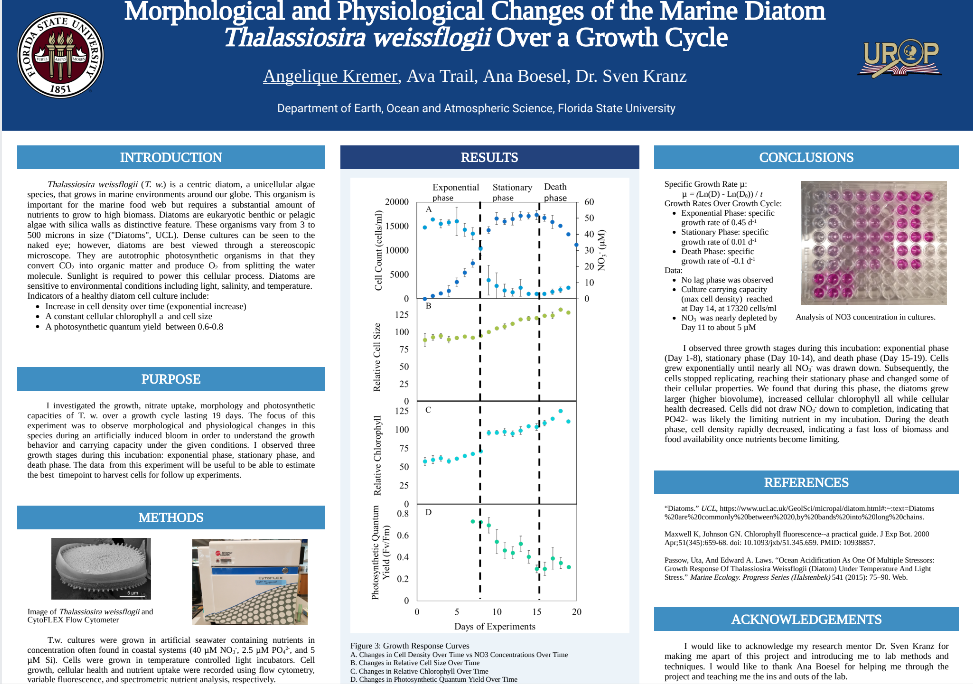Research Symposium
23rd annual Undergraduate Research Symposium, April 6, 2023
Angelique Kremer Poster Session 3: 2:45 pm - 3:45 pm/ Poster #14

BIO
My name is Angelique Kremer and I’m a second year here at Florida State University getting my degree in Biology with a focus in Marine Biology. I'm originally from St. Petersburg, Florida, and enjoy the beach and all oceanic life. Over this past year I have learned about phytoplanktonic species and am interested in learning more about other marine species and oceanic processes. I hope to get a job as a researcher working in the field collecting data and analyzing it back in the lab.
Morphological and Physiological Adaptations Over Growth Cycles of the Marine Diatom Thalassiosira weissflogii
Authors: Angelique Kremer, Sven KranzStudent Major: Marine Biology
Mentor: Sven Kranz
Mentor's Department: The Department of Earth, Ocean, and Atmospheric Science Mentor's College: FSU College of Arts and Sciences Co-Presenters:
Abstract
Thalassiosira weissflogii (TW) is a circular diatom that grows in marine environments that are yellow green in color at high densities. Triplicates of a TW culture were grown a media solution that contained necessary nutrients such as 40 µm NO3 , 2.5 µm PO4 , and 5 µm Si. Cultures were kept in incubators at a temperature of 23 ℃ and in light conditions creating a diurnal cycle. The TW triplicates were observed for a total of 19 days. Using flow cytometry, variable fluorescence instruments, and a multiplate reader, cell growth and nutrient uptake were recorded daily. The focus of this experiment was to observe morphological and physiological changes in the diatom species Thalassiosira weissflogii during an artificial bloom. They go through four life stages: lag phase, exponential phase, stationary phase, and death phase. We found that during the stationary phase, the diatoms changed morphology; they became much larger when looking at FSC data. TW also changed their chlorophyll rates, increasing in biovolume and Chl a per cell. Once NO3 was nearly drawn down, the cells stopped replicating but changed some of their cellular properties. Cells did not draw NO3 to completion, only to about 5 µm. This indicates that PO4 is the limiting agent. During cell death, all nutrients had been taken up and they could not grow more biomass.
Keywords: Angelique Kremer, Sven Kranz, Marine Diatom, Thalassiosira weissflogii


